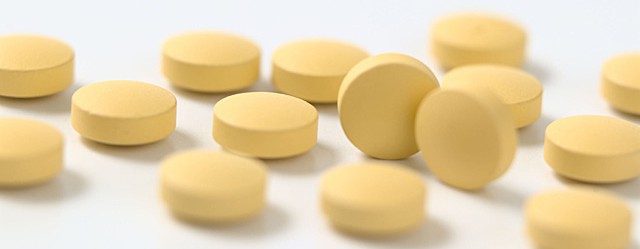
Note: This article discusses the changes in Japan FFC systems, following the Beni-Koji Incident that happened earlier this year.
On August 23, 2024, a partial amendment to the Food Labeling Standards (Japanese) has been published (some of which came into effect on September 1). The following are excerpts of the outline of the amendment organized in the Summary of the amendment history of the Food Labeling Standards (Japanese).
●In light of the Future Measures Regarding the labeling system for Foods with Function Claims (FFC) in response to the Beni-Koji (rice fermented with red yeast) products Incident (compiled at the Ministerial Meeting on Measures for the Beni-Koji Products on May 31, 2024), the following amendments have been made:
- As matters to be complied with for notifiers (when an incident happens), it is stipulated that they must collect information on suspected health hazards and that it must be promptly provided to the prefectural governor and other relevant authorities as well as to the Commissioner of the Consumer Affairs Agency (CAA) in the event that such information is obtained.
- It is stipulated that foods will no longer meet the requirements for FFC in the event that the accumulation of scientific knowledge (after the date of notification of such foods) leads the Commissioner of the CAA to the conclusion that it is no longer appropriate to make claims about expected specific health benefits related to their functional ingredients.
- As matters to be complied with for notifiers, it is stipulated that Good Manufacturing Practice (GMP) -based manufacturing control is required for foods in the form of tablets, capsules, and similar dosage forms
- How and where to label the information such as the following has been reviewed.
– “The product has not been evaluated by the government for its functionality and safety”
– “The product is not intended for the diagnosis, treatment, or prevention of any diseases”
– and precautions for consumption such as specific warnings about interactions with medications, prevention of excessive intake- As further matters to be complied with for notifiers, it is stipulated that the notifier must conduct a self-check of their adherence to the compliance matters every year after the initial notification and must report the results annually to the Commissioner of the CAA.
- The specific contents of the following information to be notified to the Commissioner of the CAA are stipulated as well as the forms to notify them to be notified by the Cabinet Office.
a) the content of the labeling
b) basic information on the food-related business operator, such as their name and contact information
c) information on the evidence for safety and functionality
d) information on the production, manufacturing, and quality control
e) system for collecting information on health hazards
f) other necessary information- For new functional ingredients with no prior notification records, if the Commissioner of the CAA recognizes that it would take particularly long to confirm the notification documents, it is stipulated that the deadline for submitting the notification documents prior to sale can be exceptionally extended from the standard 60 business days to 120 business days as a special provision.
And the specific revision points are as follows (although it is easier to check them by referring to the old and new comparison table) (This link and all links below are in vertical Japanese).
- Article 2 (Definitions) … definitions, requirements (compliance with Appended Table 26, Appended Table 27, etc.)
- Article 3 (Cross-sectional (horizontal) mandatory labelling) …labeling items, labeling methods
- Article 22, Appended Table 20 (Labeling methods, etc.) … to label “機能性表示食品” (EN: Foods with Function Claims) in a frame, etc.
- Addition of Appended Table 26 (In relation to Article 2 (Definitions)) …notification items, notification methods
- Addition of Appended Table 27 (In relation to Article 2 (Definitions)) …compliance requirements, compliance content”
Enforcement date and transitional measures (vertical Japanese)
The amendment has generally been enforced from September 1, 2024, but some of the provisions in Appended Table 26 and Appended Table 27 will be enforced from April 1, 2025.
The transitional period is planned to be until August 31, 2026.
There is a two-year transitional period for the provisions of Article 3, paragraph 2, Article 22, paragraph 1, Appended Table 20 and Appended Table 27 paragraph 2, item 1 (the stipulation in the case of notification as foods such as tablets and capsules made from natural extracts, etc. in these provisions) (effective September 1, 2024). Since the labeling method (e.g., restrictions on indicating a part of the functionality) has also been revised this time, many FFC products will be expected to have their labeling reviewed. From the results of the public comment on the amendment draft (Japanese) where the CAA’s views are listed in response to each of these comments, you can also check the purpose of the amendment and the views on the comments, so it would be good to go through them as well (if you have any questions or trouble while doing so, please let us know!).
Share/Like/Follow:
Newsletter Signup
We issue monthly e-newsletters, which provide you with the latest updates on food labeling/regulations in Japan.
If you want to make sure to not miss any issue, please click below.
Related Service
Research Services on Ingredients & Food Labeling -For the Japanese Market-
We verify the conformity of ingredients and additives with the standards for use in Japan based on specifications such as formulation lists. We also verify the conformity of the proposed labeling of ingredient names, nutrients, etc. with the labeling standards based on specifications such as formulation lists.

Label bank Co., Ltd. CEO (Founder)
Born in Japan. Working on solving various issues related to food labeling operations. Also regularly gives lectures for various organizations in Japan.
Co-author of ‘Latest edition: Guide book Food Labeling Law and related business practical points – from scratch (Japanese version only)’ (DAI-ICHI HOKI CO., LTD/2019).






